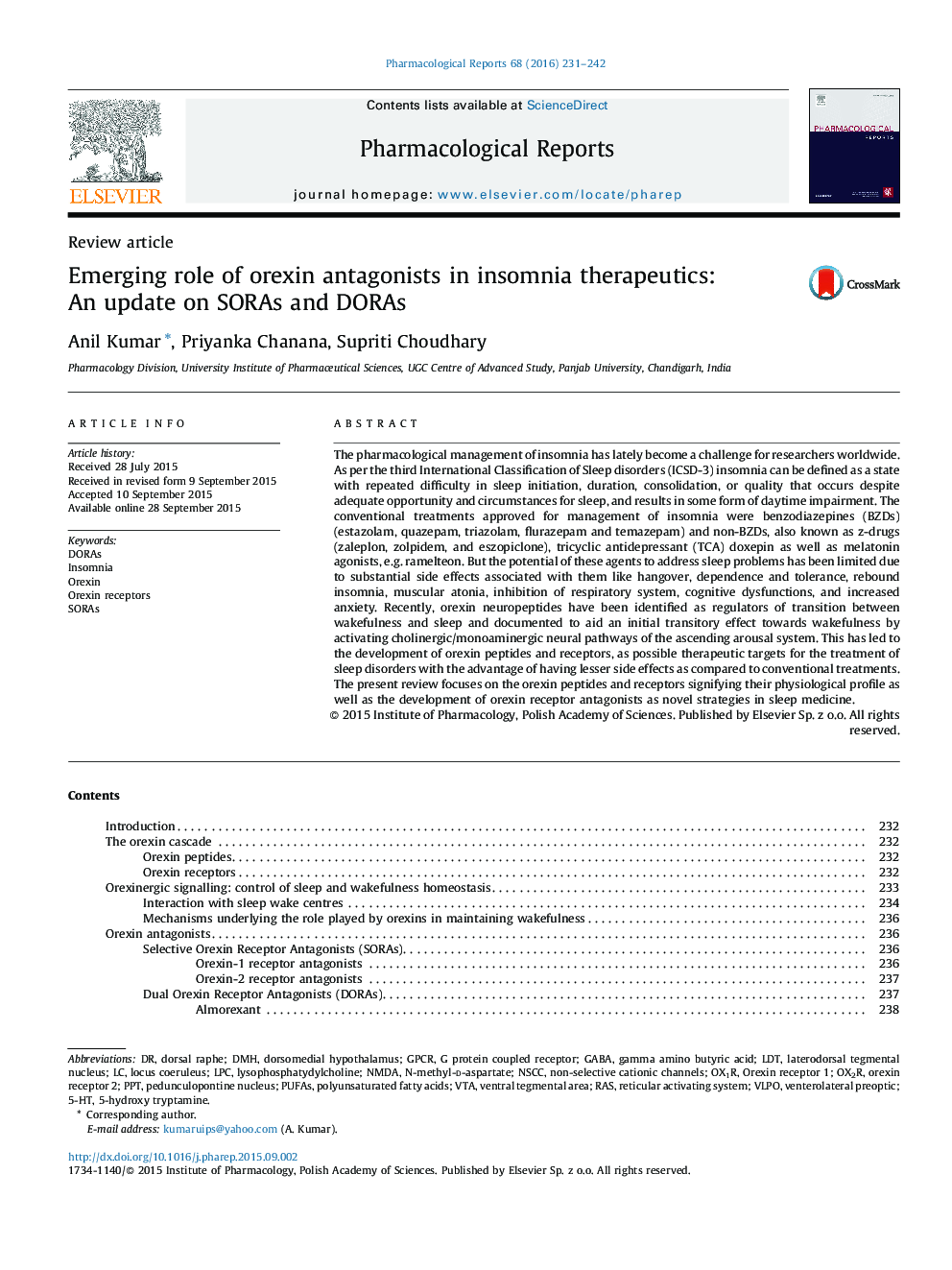| Article ID | Journal | Published Year | Pages | File Type |
|---|---|---|---|---|
| 2011626 | Pharmacological Reports | 2016 | 12 Pages |
The pharmacological management of insomnia has lately become a challenge for researchers worldwide. As per the third International Classification of Sleep disorders (ICSD-3) insomnia can be defined as a state with repeated difficulty in sleep initiation, duration, consolidation, or quality that occurs despite adequate opportunity and circumstances for sleep, and results in some form of daytime impairment. The conventional treatments approved for management of insomnia were benzodiazepines (BZDs) (estazolam, quazepam, triazolam, flurazepam and temazepam) and non-BZDs, also known as z-drugs (zaleplon, zolpidem, and eszopiclone), tricyclic antidepressant (TCA) doxepin as well as melatonin agonists, e.g. ramelteon. But the potential of these agents to address sleep problems has been limited due to substantial side effects associated with them like hangover, dependence and tolerance, rebound insomnia, muscular atonia, inhibition of respiratory system, cognitive dysfunctions, and increased anxiety. Recently, orexin neuropeptides have been identified as regulators of transition between wakefulness and sleep and documented to aid an initial transitory effect towards wakefulness by activating cholinergic/monoaminergic neural pathways of the ascending arousal system. This has led to the development of orexin peptides and receptors, as possible therapeutic targets for the treatment of sleep disorders with the advantage of having lesser side effects as compared to conventional treatments. The present review focuses on the orexin peptides and receptors signifying their physiological profile as well as the development of orexin receptor antagonists as novel strategies in sleep medicine.
